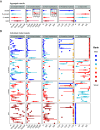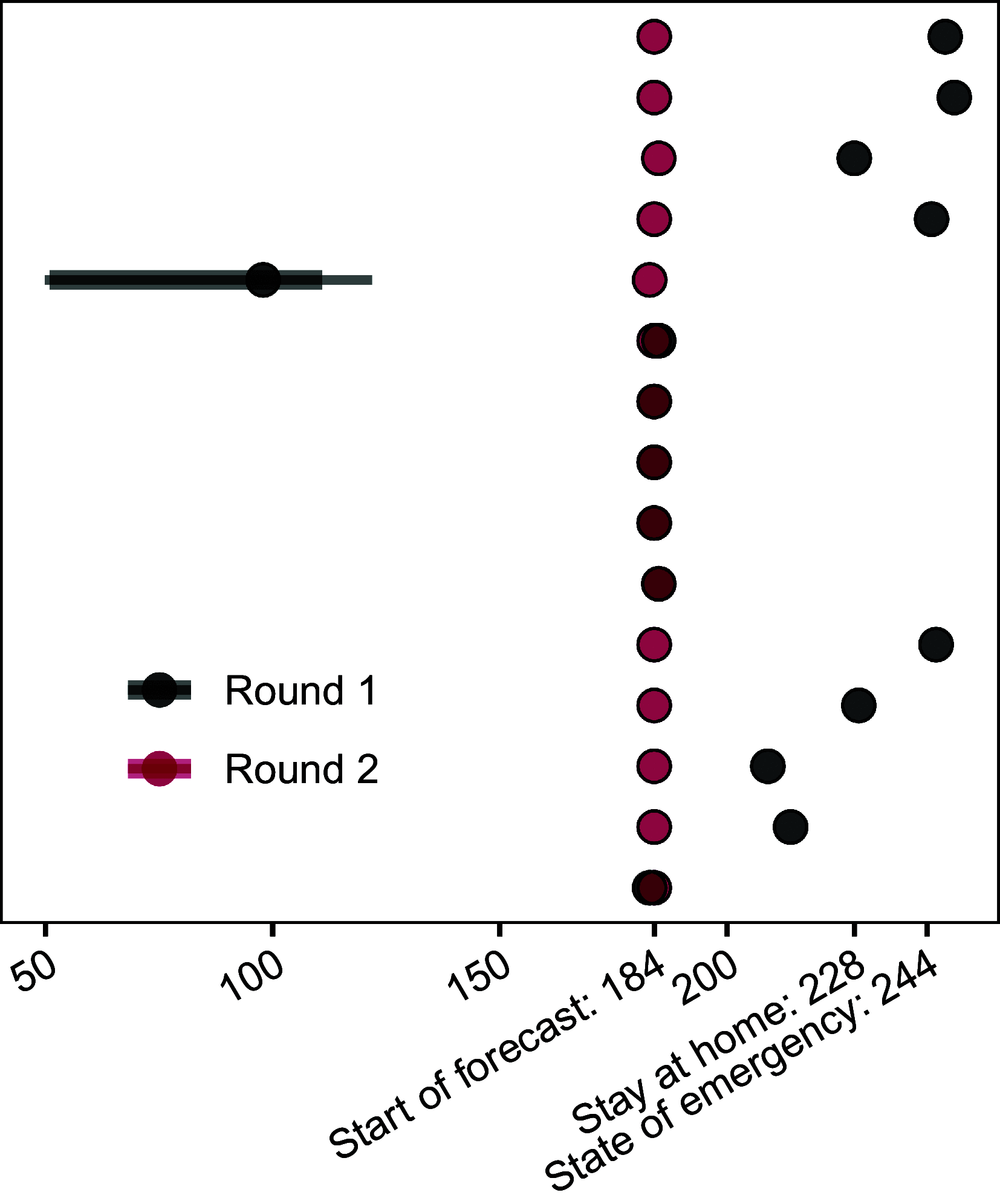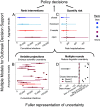Multiple models for outbreak decision support in the face of uncertainty
- PMID: 37098064
- PMCID: PMC10160947
- DOI: 10.1073/pnas.2207537120
Multiple models for outbreak decision support in the face of uncertainty
Abstract
Policymakers must make management decisions despite incomplete knowledge and conflicting model projections. Little guidance exists for the rapid, representative, and unbiased collection of policy-relevant scientific input from independent modeling teams. Integrating approaches from decision analysis, expert judgment, and model aggregation, we convened multiple modeling teams to evaluate COVID-19 reopening strategies for a mid-sized United States county early in the pandemic. Projections from seventeen distinct models were inconsistent in magnitude but highly consistent in ranking interventions. The 6-mo-ahead aggregate projections were well in line with observed outbreaks in mid-sized US counties. The aggregate results showed that up to half the population could be infected with full workplace reopening, while workplace restrictions reduced median cumulative infections by 82%. Rankings of interventions were consistent across public health objectives, but there was a strong trade-off between public health outcomes and duration of workplace closures, and no win-win intermediate reopening strategies were identified. Between-model variation was high; the aggregate results thus provide valuable risk quantification for decision making. This approach can be applied to the evaluation of management interventions in any setting where models are used to inform decision making. This case study demonstrated the utility of our approach and was one of several multimodel efforts that laid the groundwork for the COVID-19 Scenario Modeling Hub, which has provided multiple rounds of real-time scenario projections for situational awareness and decision making to the Centers for Disease Control and Prevention since December 2020.
Keywords: cognitive biases; decision theory; multi-model aggregation.
Conflict of interest statement
The authors declare no competing interest.
Figures




Update of
-
COVID-19 reopening strategies at the county level in the face of uncertainty: Multiple Models for Outbreak Decision Support.medRxiv [Preprint]. 2020 Nov 5:2020.11.03.20225409. doi: 10.1101/2020.11.03.20225409. medRxiv. 2020. Update in: Proc Natl Acad Sci U S A. 2023 May 2;120(18):e2207537120. doi: 10.1073/pnas.2207537120. PMID: 33173914 Free PMC article. Updated. Preprint.
References
Publication types
MeSH terms
Grants and funding
LinkOut - more resources
Full Text Sources
Medical
Miscellaneous

